Related Research Articles

Congo may refer to either of two countries that border the Congo River in central Africa:

Zaire is one of the 18 provinces of Angola. It occupies 40,130 square kilometres (15,490 sq mi) in the north west of the country and had a population of 594,428 inhabitants in 2014. It is bordered on the west by the Atlantic Ocean, on the north by the Democratic Republic of Congo, on the east by the Uíge Province, and on the south by the Bengo Province.
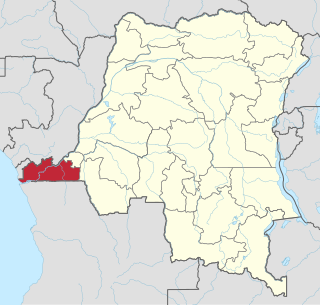
Kongo Central, formerly Bas-Congo is one of the 26 provinces of the Democratic Republic of the Congo. Its capital is Matadi.
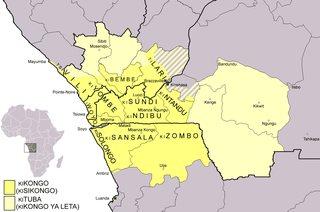
Kongo or Kikongo is one of the Bantu languages spoken by the Kongo people living in the Democratic Republic of the Congo, the Republic of the Congo, Angola and Gabon. It is a tonal language. It was spoken by many of those who were taken from the region and sold as slaves in the Americas. For this reason, while Kongo still is spoken in the above-mentioned countries, creolized forms of the language are found in ritual speech of Afro-American religions, especially in Brazil, Cuba, Puerto Rico, the Dominican Republic and Haiti. It is also one of the sources of the Gullah language and the Palenquero creole in Colombia. The vast majority of present-day speakers live in Africa. There are roughly seven million native speakers of Kongo, with perhaps two million more who use it as a second language.
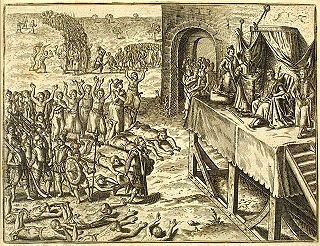
The Manikongo, or Mwene Kongo, was the title of the ruler of the Kingdom of Kongo, a kingdom that existed from the 14th to the 19th centuries and consisted of land in present-day Angola, Gabon, the Republic of the Congo and the Democratic Republic of the Congo. The manikongo's seat of power was Mbanza Kongo, now the capital of Zaire Province in Angola. The manikongo appointed governors for the provinces of the Kingdom and received tribute from neighbouring subjects.

The Kongo people are a Bantu ethnic group primarily defined as the speakers of Kikongo).
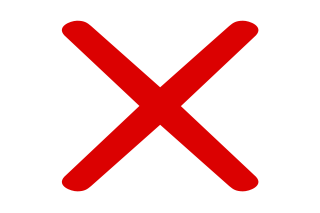
The Kingdom of Kongo was a kingdom located in central Africa in present-day northern Angola, the western portion of the Democratic Republic of the Congo, the Republic of the Congo as well as the southernmost part of Gabon. At its greatest extent it reached from the Atlantic Ocean in the west to the Kwango River in the east, and from the Congo River in the north to the Kwanza River in the south. The kingdom consisted of several core provinces ruled by the Manikongo, the Portuguese version of the Kongo title Mwene Kongo, meaning "lord or ruler of the Kongo kingdom", but its sphere of influence extended to neighbouring kingdoms, such as Ngoyo, Kakongo, Loango, Ndongo and Matamba, the latter two located in what is Angola today.

Bernardo I of Kongo was a 16th-century manikongo (ruler) of the Kingdom of Kongo, a region encompassing areas in 21st-century Angola and the Democratic Republic of Congo. He came to power after murdering his half-brother Afonso II who was less well-disposed toward the Portuguese.
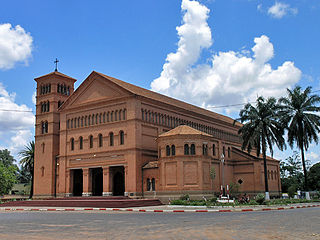
Christianity is the majority religion of the Democratic Republic of the Congo and is professed by a majority of the population. The number of Christians of all denominations in the Congo is estimated at over 63 million by the Pew Research Center, a figure representing approximately 95.7 percent of the national population or 2.9 percent of the world's Christians. The largest denomination is Roman Catholicism which represents 50 percent of the national population, and is followed by Protestantism and Kimbanguism and other sects. The history of Christianity in the area of the modern-day Congo is closely linked to the history of European colonial expansion.

Mbanza-Kongo, is the capital of Angola's northwestern Zaire Province with a population of 148,000 (2014). Mbanza Kongo was founded some time before the arrival of the Portuguese in 1483 and was the capital of the Kilukeni dynasty ruling at that time. The site was temporarily abandoned during civil wars in the 17th century. It lies close to Angola's border with the Democratic Republic of the Congo. It is located at around 6°16′0″S14°15′0″E and sits on top of an impressive flat-topped mountain, sometimes called Mongo a Kaila because recent legends recall that the king created the clans of the kingdom and sent them out from there. In the valley to the south runs the Luezi River. In 2017, Mbanza Kongo was declared as a UNESCO World Heritage Site.
Henrique II was ruler of the Kingdom of Kongo. His rule came after the end of a period of conflict in the kingdom after the death of Afonso V, who was said to have been poisoned. Henrique was able to take the throne as a compromise between the various powerful factions which had been brokered by the Água Rosada house, the descendants of Pedro IV, who had familial ties to branches of both Kinlaza and Kimpanzu houses. Under this peace, Henrique was able to rebuild the nation, and eventually passed the throne on to Garcia V, a member of the Água Rosada house.
Afonso V of the Congo was a Kinlaza manikongo of the Kingdom of Kongo from 1785 to 1787. He succeeded to his brother José I of Kongo without any struggle in April 1785 and was part of the southern faction of the Kanda Kinzala based in Nkondo. He was a king known for his piety and took the pompous title of the powerful Dom Alfonso V, King of Congo, ruler of part of Ethiopia in his letters. It is possible he was poisoned by his successor in order to seize the throne. His sudden death caused a period of turmoil within the nation that would not end until Henrique II took the throne.
José I Mpasi a Nkanga, or Zuzi, was ruler of the Kingdom of Kongo between 1779 and 1785. He was the first ruler from the branch of the House of Kinlaza that came from the southeast of the country, known as the Nkondo ranch, and the first to be included in the kinglists produced by Jean Cuvelier. When José ascended to the throne, the Mbamba Lovata branch of the Kimpanzu house under Pedro V once again contested the throne, which led to a conflict between the two houses once again. This culminated in a decisive battle outside of the capital, São Salvador which was a victory for José, and confirmed his rule. On his death, he was succeeded by his brother Afonso V.
Álvaro XI was ruler of the Kingdom of Kongo (1764–1779) from the Kinlaza house. He overthrew the rule of first Pedro V, who had refused to adhere to the rotating houses system that Pedro IV had implemented. As Pedro continued his claim to the throne after being overthrown, Álvaro's death set off another showdown between the Nkondo branch of the Kinlaza, who favoured José I, and the Mbamba Lovata faction, the main branch of the Kimpanzu house who still favored Pedro V.
Pedro V Ntivila a Nkanga was a ruler of the throne of the Kingdom of Kongo and a member of the Kimpanzu house. He ruled Kongo from 1763 to 1764, after he overthrew Sebastião I, when Pedro refused to relinquish the Kimpanzu claims to the throne. This overthrow resulted in the breakdown of the rotating houses system put in place by Pedro IV. His reign was short-lived, however, and after he was in turn overthrown by Álvaro XI, he was removed from the official records, evidenced by the ascension of the official Pedro V in 1859. It is most likely due to the fact that he claimed the throne at the same time as Álvaro IX, though he kept his claim on the throne even after his removal.

Nicolau I Misaki mia Nimi was the ruler of the Kingdom of Kongo as a member of the Kimpanzu house from 1752 until sometime after 1758, during the rotating houses period established by Pedro IV.
Manuel Nkomba was ruler of the Portuguese vassal of the Kingdom of Kongo from 1910 until 1911, when he died after only a year on the throne, which was possibly why he was excluded from the title of Manuel III, which was given to his successor Manuel III. He was the son of King Pedro VI.
Henrique IV or Tekenge was regent of the Portuguese vassal of the Kingdom of Kongo from 1896 until 1901, when his nephew Pedro VI rose to majority.
Henrique III Mpanzu a Nsindi a Nimi a Lukeni was ruler of the Kingdom of Kongo from the Kivuzi branch of the Kinlaza house, who reigned from 1840 until 1857. Henrique came to power when he overthrew his predecessor, André II. This was with the support of the elector Ntinu Nsaku. Henrique did not manage to kill Andre II and King Andre continued to exercise power from Mbanza Maputu over some of the Kongo realm.
Alvaro XIII or Ndongo was king of Kongo from 1857 until 1859. He was a member of the Nkanga branch of the Kimpanzu house.